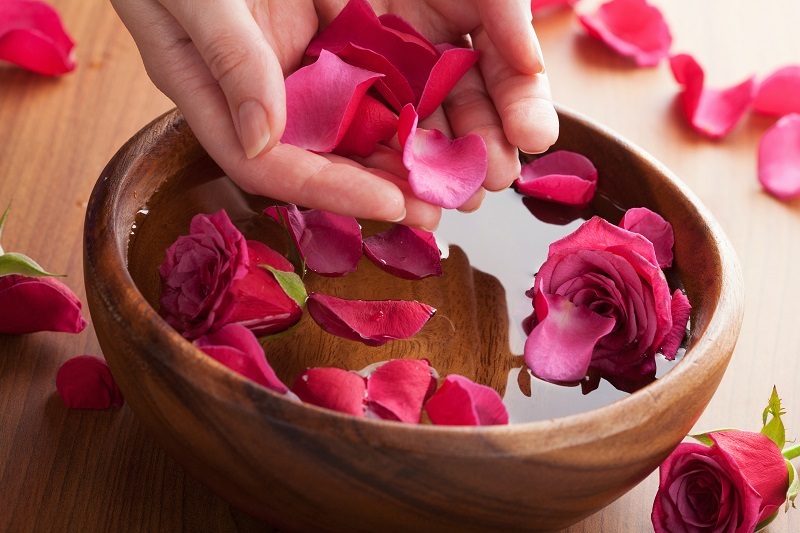Secrets of tulips: 7 intriguing facts revealed
Posted on 25/08/2025
Secrets of Tulips: 7 Intriguing Facts Revealed
Tulips are renowned for their elegance, vibrant hues, and storied past spanning centuries. Yet, behind their simple beauty lie mysteries and fascinating secrets that most people have never heard of. In this comprehensive exploration, we reveal seven captivating facts about tulip flowers, delving into their origins, symbolism, and unexpected roles in history and culture. Unlock these secrets of tulips and see why these enchanting blooms remain perennial favorites worldwide.
The Fascinating World of Tulips
From royal gardens to fields ablaze with color, tulips have dazzled the world for centuries. Their timeless appeal stretches beyond mere ornamentation. Each petal carries with it tales of passion, fortune, and intrigue. Whether you're a gardening enthusiast, a history buff, or simply captivated by natural beauty, the intriguing facts about tulips below will enhance your appreciation for this remarkable flower.

1. Tulip Mania: The First Economic Bubble
One of the most astonishing secrets of tulips revolves around an event so dramatic it became a symbol of speculative excess. In 17th century Holland, the value of tulip bulbs reached unprecedented heights--a phenomenon now known as Tulip Mania.
- At the peak of Tulip Mania (1636-1637), some single tulip bulbs commanded prices higher than luxury houses in Amsterdam.
- People from all walks of life--merchants, artisans, even nobles--invested fortunes, hoping to cash in on the craze.
- The bubble famously burst, plunging prices and leaving many in financial ruin, making it the first recorded economic bubble in history.
This fascinating tulip fact highlights their power to inspire not just beauty, but also economic folly--forever linking the name "tulip" with speculative excess.
2. Origins from the Wild: The Journey from East to West
While tulips are often associated with Dutch windmills and vibrant spring fields, their journey began far from the Netherlands. Did you know that the origins of tulips trace back to Central Asia?
- Wild tulips grow naturally in regions spanning Turkey, Iran, and the foothills of the Himalayas.
- They were cultivated in the Ottoman Empire as early as the 10th century--highly prized by sultans and aristocrats.
- Tulips made their way to Europe in the 16th century, when botanist Carolus Clusius planted the first bulbs in Leiden, igniting widespread fascination.
This journey from the Silk Road to grand European gardens underlines the global legacy of tulips and their rise to horticultural superstardom.
3. The Symbolism of Tulips: More Than Meets the Eye
Beyond their outer glory, tulips are rich in meaning--each color and variety carries its own story. Understanding the symbolism of tulip flowers reveals another secret facet of their lasting allure.
- Red tulips symbolize true love and deep affection, making them popular choices for romantic gestures.
- Yellow tulips once signified hopeless love, but now are viewed more positively, representing cheerfulness and friendship.
- White tulips stand for purity and forgiveness, while purple tulips denote royalty and elegance.
- Multi-colored tulip bouquets symbolize a sense of celebration and joy.
The ancient Persians and Turks saw tulips as symbols of paradise on earth, which persisted as the flower spread westward. *When you give or receive tulips, remember they carry centuries of layered meaning*.
4. Botanical Marvels: Tulips Have Strange Powers
One of the fascinating secrets about tulips lies in their unique biological traits. Did you know tulips can actually "move" and respond to their environment long after being cut?
- Tulip stems continue to grow up to an inch in a vase of water, reaching toward sunlight (phototropism).
- This ongoing growth gives tulip arrangements a dynamic, ever-changing appearance--unlike any other cut flower.
- Tulips close at night and open during the day, a process called nyctinasty.
These botanical wonders help make tulips a favorite for florists and home decorators. When you see a tulip bouquet subtly shifting day-to-day, remember: you're witnessing a living secret in action!
5. A Rainbow of Diversity: Over 3,000 Varieties
With their stunning range of colors, forms, and patterns, tulips offer far more diversity than meets the eye. One of the most remarkable tulip facts is the sheer number of officially recognized varieties.
- There are over 3,000 registered tulip varieties, classified into 15 distinct groups by flower shape and blooming time.
- The famous "broken tulips" display intricate feathered stripes. Originally, these patterns were caused by a virus--now admired for their rarity and beauty.
- Modern tulips are bred for everything from giant blooms to delicate species types, with colors spanning the spectrum (except for true blue).
From classic Darwin Hybrids to the frilly Parrot Tulips, the diversity of tulips is a tribute to centuries of cultivation and creativity.
6. Edible and Medicinal Uses of Tulips
Surprisingly, one of the best-kept secrets about tulip flowers is their use beyond the garden or vase--they have a culinary and medicinal history too!
- During World War II, Dutch citizens facing famine ate tulip bulbs to survive.
- Tulip petals--when untreated by chemicals--are edible and sometimes used to garnish salads or desserts.
- Historically, tulip bulbs have been used in folk remedies, although they're not commonly used today for medicinal purposes.
Warning: Despite their historical use, tulip bulbs contain compounds that can cause stomach upset if improperly prepared. Always consult experts before consuming wild plants!
7. Modern Tulip Festivals: A Global Celebration
To celebrate the timeless secrets of tulips, countries around the world hold spectacular festivals each spring. These vibrant displays attract millions of visitors, affirming the flower's enduring popularity.
- Keukenhof Gardens in the Netherlands boasts over 7 million tulip bulbs in bloom every year--a breathtaking orange, red, pink, and white tapestry.
- Skagit Valley Tulip Festival in Washington State, USA, is North America's largest, with colossal fields of multi-colored tulips drawing crowds throughout April.
- Canada, Australia, Turkey, and other nations host their own tulip festivals, blending Dutch heritage, local traditions, and horticultural excellence.
No flower brings together entire communities in celebration the way tulips do, forming living rainbows that inspire and unite people around the globe.

Conclusion: Discover the Magic of Tulips
Tulips are so much more than springtime decorations--they are storied survivors, economic legends, global travelers, and living symbols rich with meaning. Their ability to unite beauty, drama, and history makes them truly unique in the world of flowers. The secrets of tulips revealed in this article only scratch the surface of their complex and colorful legacy.
Key Takeaways - Tulip Mysteries Worth Sharing
- Tulip Mania changed the economic world and remains a lesson in speculation.
- They originated in Central Asia long before flowering in Dutch fields.
- Tulip colors and forms carry intricate symbolism, reflecting love, joy, and purity.
- They continue to "grow" after cutting, showing unique biological marvels.
- With over 3,000 varieties, tulips are among the most diverse blooms.
- Though sometimes edible, be cautious--tulips hold culinary secrets, too!
- Tulip festivals unite people in annual worldwide celebrations of beauty and culture.
Frequently Asked Questions About Tulips
- What makes tulips unique among flowers?
Tulips offer remarkable diversity, ongoing growth after cutting, and a remarkable history linking them to economic events and cultural traditions. - Are tulip bulbs really edible?
Yes, but only certain types and when prepared properly. They were eaten during war-time famine, but can be toxic if handled incorrectly. - How did tulips become associated with the Netherlands?
After arriving from the Ottoman Empire, tulips were enthusiastically cultivated by the Dutch, leading to Tulip Mania and the flower's enduring national significance. - What is the rarest tulip color?
True blue tulips don't exist yet; many attempts have produced only purple or violet shades, making blue one of the rarest in the tulip color spectrum.
Ready to plant your own piece of history? Whether you're admiring their beauty, learning their lore, or visiting a festival, let the secrets of tulips inspire wonder in your garden and your imagination.
Explore More About Amazing Flowers:
- The rich history and origins of tulips
- Expert tips on how to care for tulip flowers
- The meaning and symbolism of other popular blooms
If you found these intriguing tulip facts fascinating, share this article and spread the wonder of one of nature's best-kept secrets!







